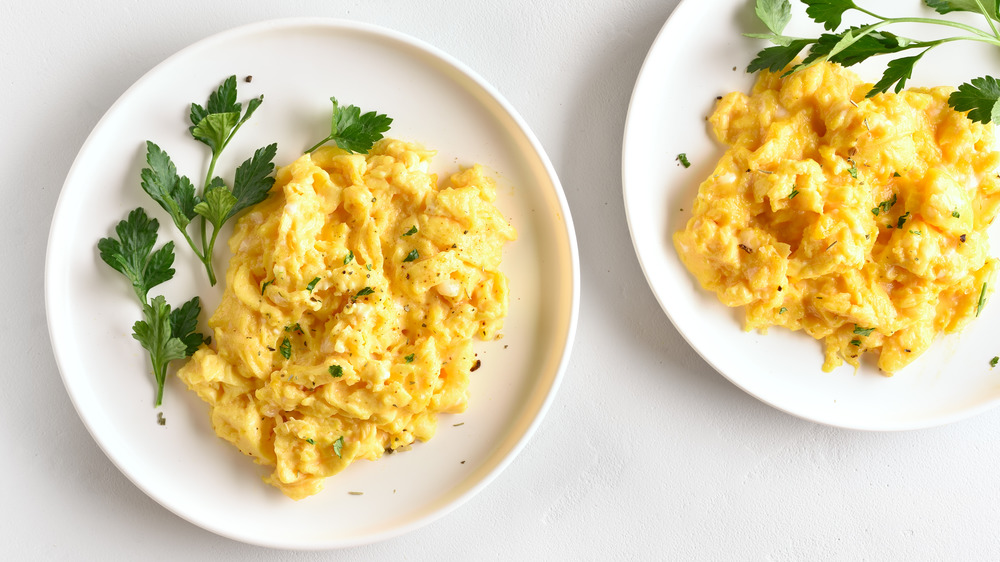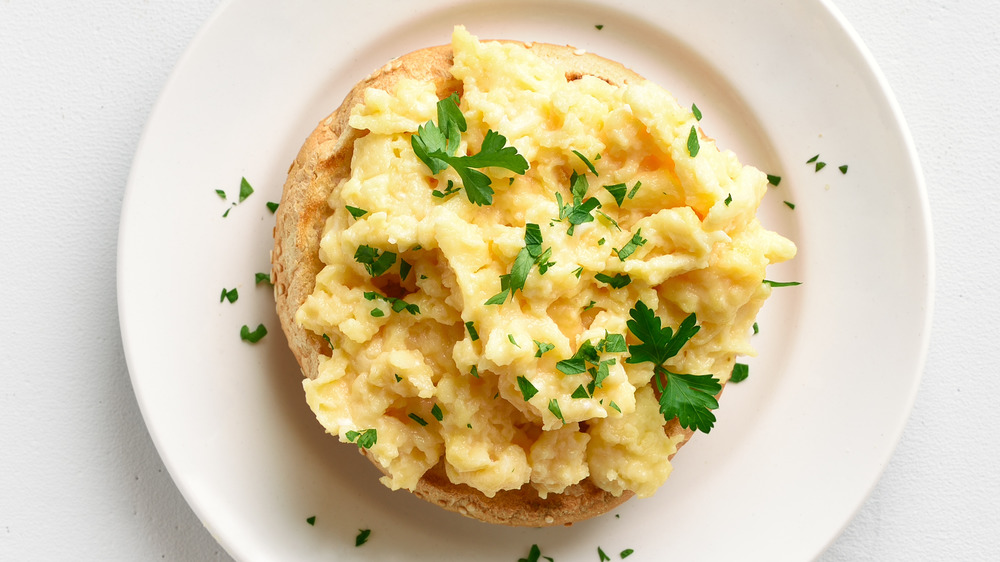The Real Difference Between English Scrambled Eggs And American Scrambled Eggs
Ah, the noble egg. Rich in protein and (according to Healthline) loaded with health benefits, eggs are the MVP of breakfast... and nothing highlights their greatness quite like scrambled eggs. A dish that requires just a few inexpensive ingredients, scrambled eggs are a quick and easy option for the most important meal of the day. But did you know that ordering your eggs "American-style" or "English-style" at your favorite breakfast spot could yield very different results?
The difference is really all in the cooking method, according to celebrity chef Jamie Oliver. He uses the same three ingredients — eggs, a pinch of salt, and a knob of butter — for both American and English preparations. However, when Insider cooked both dishes, the outlet ultimately found the American version lacking. "The flavor had no depth or richness," they said of the fluffy, diner-style eggs. Meanwhile, they wrote that the English scrambled eggs had a flavor that was "bold and bright, and good enough that I'd make them again."
How American scrambled eggs differ from the English version
Though recipes for scrambled eggs vary (and using this one scrambled egg hack could really take your breakfast to the next level), the basics of the dish are generally the same: chicken eggs (Oliver recommends two per person of "barn quality," aka ones you get directly from a farm, or better), beaten and cooked over heat, using melted butter in a pan or pot.
So, why do the American and English versions of scrambled eggs look and taste so different? American scrambled eggs are what eggs.ca would call a "hard scramble." These eggs are cooked through completely, having been set in the pan a bit longer than their English counterparts, and folded in from the sides slowly, until that solid, drier scramble is achieved. When scrambling eggs the English way, both Oliver and BBC Good Food recommend stirring the eggs fairly frequently as they cook, and then taking the pan off the heat before the eggs are cooked completely. In this method, it is the heat of the warm pan that finishes off the dish, resulting in a creamier, velvety scramble.

